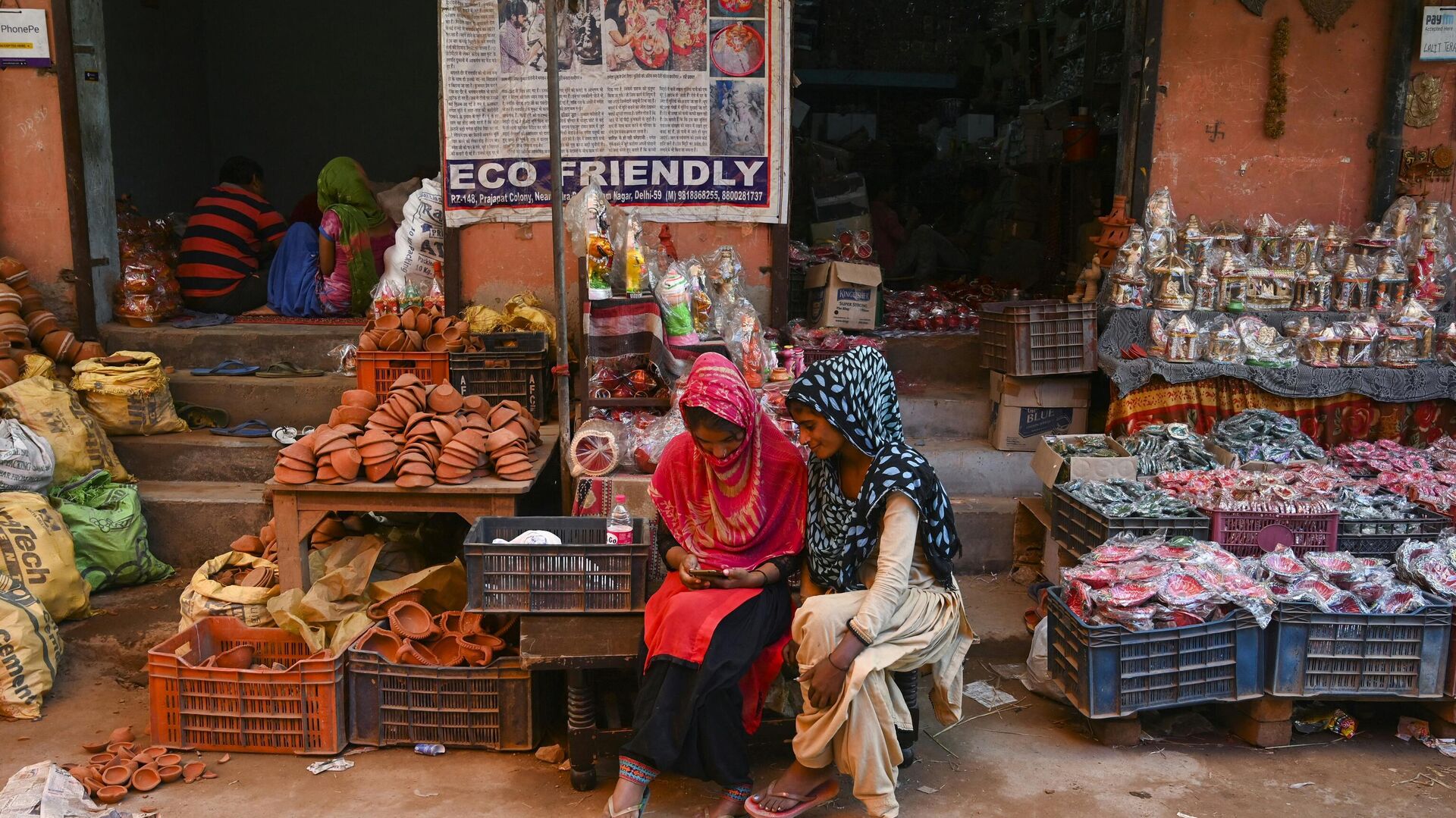https://sputnikglobe.com/20221205/women-marginalized-strata-hit-the-hardest-by-digital-divide-in-india-study-1105058590.html
Women, Marginalized Strata Hit the Hardest by Digital Divide in India: Study
Women, Marginalized Strata Hit the Hardest by Digital Divide in India: Study
Sputnik International
According to researchers in their “India Inequality Report 2022: Digital Divide,” released on Monday, India has a gender gap of 40.4% in terms of Internet... 05.12.2022, Sputnik International
2022-12-05T13:18+0000
2022-12-05T13:18+0000
2022-12-05T13:18+0000
india
survey
survey
survey
survey
survey
poor
oxfam
covid-19
rural
https://cdn1.img.sputnikglobe.com/img/07e6/0c/05/1105066372_0:161:3071:1888_1920x0_80_0_0_a9615b5aa26d9abaca168bf440175c93.jpg
Women in India are hit the hardest by inequalities based on caste, gender, and income (especially between rural and urban India), the latest Oxfam India report has found.While about 61 percent of men were using mobile phones in 2021, only 31 percent of women were reported to own cell phones that year.Meanwhile, eight percent of the general caste have access to a computer or laptop, while less than one percent of the Scheduled Tribes (ST) and two percent of the Scheduled Castes (SC) can afford such devices.Only three percent of the rural population owned a computer before the COVID-19 outbreak. This number slipped to just one percent post-COVID — which stands in contrast to the popular belief that the use of digital technology increased during the pandemic.The report also notes that most teachers in rural areas faced difficulty trying to arrange access for students to digital education during the pandemic.
https://sputnikglobe.com/20221201/how-africa-making-progress-in-eliminating-hivaids-despite-poverty-inequality--fraudsters-1104943074.html
Sputnik International
feedback@sputniknews.com
+74956456601
MIA „Rossiya Segodnya“
2022
Deexa Khanduri
https://cdn1.img.sputnikglobe.com/img/07e4/0c/1e/1081607388_0:0:961:960_100x100_80_0_0_e9e931b8c1e18fb41f3074e2145d7a3a.jpg
Deexa Khanduri
https://cdn1.img.sputnikglobe.com/img/07e4/0c/1e/1081607388_0:0:961:960_100x100_80_0_0_e9e931b8c1e18fb41f3074e2145d7a3a.jpg
News
en_EN
Sputnik International
feedback@sputniknews.com
+74956456601
MIA „Rossiya Segodnya“
Sputnik International
feedback@sputniknews.com
+74956456601
MIA „Rossiya Segodnya“
Deexa Khanduri
https://cdn1.img.sputnikglobe.com/img/07e4/0c/1e/1081607388_0:0:961:960_100x100_80_0_0_e9e931b8c1e18fb41f3074e2145d7a3a.jpg
women, unemployed, poor, digital india, oxfam, digital divide, covid, mobile phone
women, unemployed, poor, digital india, oxfam, digital divide, covid, mobile phone
Women, Marginalized Strata Hit the Hardest by Digital Divide in India: Study
Deexa Khanduri
Sputnik correspondent
According to researchers in their “India Inequality Report 2022: Digital Divide,” released on Monday, India has a gender gap of 40.4% in terms of Internet access, the widest in the Asia-Pacific region.
Women in India are hit the hardest by inequalities based on caste, gender, and income (especially between rural and urban India), the latest Oxfam India report has found.
While about 61 percent of men were using mobile phones in 2021, only 31 percent of women were reported to own cell phones that year.
Citing data from the Centre for Monitoring Indian Economy (CMIE), the report says that the reach of digital technologies in India remains primarily limited to male, urban, upper-caste, and upper-class individuals.

1 December 2022, 16:09 GMT
Meanwhile, eight percent of the general caste have access to a computer or laptop, while less than one percent of the Scheduled Tribes (ST) and two percent of the Scheduled Castes (SC) can afford such devices.
Only three percent of the rural population owned a computer before the COVID-19 outbreak. This number slipped to just one percent post-COVID — which stands in contrast to the popular belief that the use of digital technology increased during the pandemic.
The report also notes that most teachers in rural areas faced difficulty trying to arrange access for students to digital education during the pandemic.
“India’s growing inequality is accentuated due to the digital divide,” Oxfam India Chief Executive Officer Amitabh Behar said, adding that “people without devices and [access to] the internet get further marginalized due to difficulties in accessing education, health, and public services.”



